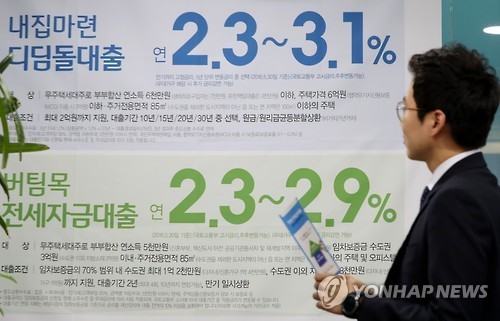Demand for fresh loans from major local lenders in Korea is likely to shrink in the first quarter as the government strives to curb a surge in household debt, official data showed Wednesday.
The overall index measuring demand for bank loans came to 11 for the January-March quarter, down from 21 a quarter earlier, the Bank of Korea said in a statement.

A reading above zero means bank lending will continue to increase, while a reading below the benchmark means demand will likely shrink.
The quarterly reading is based on a survey of 15 banks and 184 non-bank lenders between Nov. 28 and Dec. 9.
Demand for fresh loans from banks is expected to decline in the first quarter as the government has tightened restrictions on housing-related borrowings to put a cap on rapidly growing household debt.
Korea's overall household debt reached a record high of 1,295.8 trillion won ($1.07 trillion) as of end-September, according to BOK data
A separate index measuring demand for fresh loans from local savings banks came to 9 for the first quarter, compared with 12 for the previous quarter. An index for credit card firms jumped to 13 from 6 over the cited period, the statement said.
Demand for fresh loans from local companies is expected to continue to grow in the first quarter while the index gauging the demand from small and medium-sized firms come to 23 for the January-March period, compared with 30 for the previous quarter, it said.
The BOK said local banks are likely to apply stricter rules when they extend loans to local companies and households due to a rise in their credit risks.
Indices measuring credit risks of large and smaller firms came to 30 and 43 for the January-March period, respectively, up from 23 and 27 in the previous quarter. Meanwhile, an index measuring credit risks of households jumped to 37 from 13 during the cited period. (Yonhap)






![[Today’s K-pop] Blackpink’s Jennie, Lisa invited to Coachella as solo acts](http://res.heraldm.com/phpwas/restmb_idxmake.php?idx=644&simg=/content/image/2024/11/21/20241121050099_0.jpg)
